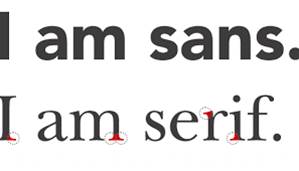Media assessment 2 learner response
1) Type up your feedback in full (you don't need to write the mark and grade if you want to keep this confidential).
"Pretty difficult to fault but perhaps more subject terminology for Q3 e.g. mise-en-scene, camera shot, colour scheme etc. when analysing the unseen products." Marks: (28/34) Grade 7
2) Read the mark scheme for this assessment carefully (you'll need your Greenford Google login to access this). Write down the mark you achieved for each question:
Q1: 1/1
Q2: 1/1
Q3: 5/8
Q4: 2/2
Q5: 2/2
Q6: 17/20
Where you didn't achieve full marks, write WHY you think you missed out on the extra marks. Use the indicative content suggestions in the mark scheme to help with this. If you got any media terminology wrong in the assessment you can make a note of it here. Didn't use enough technical language when describing the media trends in Q3. Possible lack of information on Q6, needs more refinement.
3) Look specifically at question 3 - did you successfully write about both the preferred and oppositional readings? Did your answers match any in the mark scheme? Copy in one answer from the mark scheme that you could have used.
Q3: 5/8
Q4: 2/2
Q5: 2/2
Q6: 17/20
Where you didn't achieve full marks, write WHY you think you missed out on the extra marks. Use the indicative content suggestions in the mark scheme to help with this. If you got any media terminology wrong in the assessment you can make a note of it here. Didn't use enough technical language when describing the media trends in Q3. Possible lack of information on Q6, needs more refinement.
3) Look specifically at question 3 - did you successfully write about both the preferred and oppositional readings? Did your answers match any in the mark scheme? Copy in one answer from the mark scheme that you could have used.
The bicep has connotations of masculinity and the clenched fist suggests
being tough and strong.
4) Now look at question 4. Write a definition of vertical integration plus the benefits of it listed in the mark scheme to revise this key industry terminology. You may find the blogpost on ownership and control helpful here.
Vertical integration is when one conglomerate owns different companies in the same chain of production.
E.G Disney owns film studios, CGI specialists, film distributors and TV channels such as the Disney Channel. This gives Disney the chance to make money at every stage of production. Complete ownership = more profit.
5) Finally, look at your 20-mark essay - question 6. Read this exemplar answer to help give you an idea of what a top-level response looks like. Then, write five points from either the exemplar answer or the mark scheme that you could have used in your answer. This will be excellent revision for a future film industry exam question.
-However, it could be argued that low-budget films such as
Ken Loach’s I, Daniel Blake are not attempting to compete with Disney and Marvel and instead are
trying to exist on their own terms.
-The film is extremely political and intended to inform its audience of the damage the
government’s austerity and benefits cuts were having on ordinary working class British people.
-Unfortunately, the film was hit hard by the global Covid-19 pandemic and therefore made much less at the box office than other Marvel releases.
-The $389m worldwide box office figure will have been helped slightly by the Disney+ premium streaming release but ultimately will have fallen a long way short of the billion dollar expectations of parent company Disney.
-It is therefore important to judge the success of the films in different ways – they are competing for very different audiences and with totally different success criteria.


Comments
Post a Comment